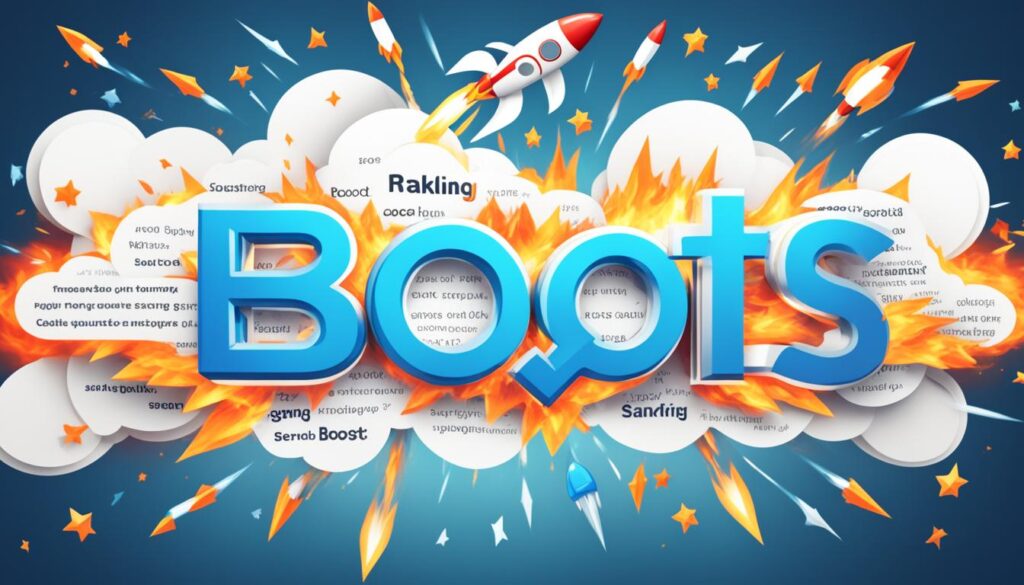Understanding Backlinks
Backlinks are crucial for SEO. They help users hop around the internet and play a big role in online marketing strategies.
Importance of Backlinks
Think of backlinks as online shout-outs. When a well-known site links to your stuff, it’s like giving you a digital thumbs up. These links boost your website’s reputation and standing, which search engines love.
These sneaky little links help search engines not only map the web, but also decide the pecking order of web pages. Each time you get a backlink, it’s as if you’ve collected a plus point, making the page more attractive to search engines. That’s why pages loaded with top-notch backlinks often pop up higher in search results (Moz). Grasping backlinks can be a game-changer for online marketing optimization.
Types of Backlinks
Backlinks aren’t all the same. Here’s a breakdown of some main types:
| Type | Description | Importance |
|---|---|---|
| DoFollow Backlinks | These links let search engines follow them and find your site. They’re great for boosting your ranking. | High |
| NoFollow Backlinks | With a “nofollow” tag, these signal search engines to skip them, so they have less effect on rankings. | Low |
| Editorial Backlinks | Naturally occur when other sites think your content rocks and link to it. | Very High |
| Guest Post Backlinks | Gained by writing content for other sites and linking back to yours. | Medium |
| Forum and Blog Comment Backlinks | Placed in comment sections, but usually not very high quality. | Low |
| Directory Backlinks | From online directories, with varying quality based on the directory’s clout. | Low to Medium |
You want to grab those high-quality backlinks. One solid backlink can do wonders, whereas mountains of poor-quality links might not help much (Backlinko). The best backlinks usually:
- Origin from respected and strong websites.
- Use an anchor text with relevant keywords.
- Are relevant to the linked topic.
- Are “DoFollow” links.
- Come from new domains.
For more tidbits on how backlinks affect your SEO game, check out our online marketing blogs and digital marketing techniques. Exploring backlinks can power up your site’s clout and relevance.
For deeper dive and hands-on actions, explore affiliate marketing programs, social media marketing tips, and content marketing ideas to round out your SEO tactics.
Nailing the importance and types of backlinks is a must for anyone aiming to crush it in online marketing and climb the search engine rankings ladder.
Optimizing Page Speed
Impact on SEO
Your website’s speediness isn’t just about looking slick; it’s about keeping your visitors happy and improving your SEO standing. Fast sites are like VIPs in the world of search engines — they just get better seats. According to Edge of the Web, when your page loads in the blink of an eye, it’s more likely to climb up those search engine result pages (SERPs). If folks are waiting for ages, they might just bail, giving your bounce rate a not-so-friendly boost and taking your traffic and conversions downhill.
Impact on SEO Metrics:
| Metric | Slow Loading Page | Fast Loading Page |
|---|---|---|
| Bounce Rate | High | Low |
| Average Session Duration | Short | Long |
| Conversion Rate | Low | High |
Keep your load times under 2 seconds if you wanna win this game (Edge of the Web). Super quick page loads make visitors happy and tell search engines your site’s the real deal.
Factors Affecting Page Speed
Some nitty-gritty stuff you can tweak to make your site zoom faster than a cat chasing a laser pointer:
- Caching:
- Imagine having a ready-to-eat meal instead of cooking from scratch every time. Caching does that for your site, shaving off time for repeat visitors.
- Content Delivery Network (CDN):
- Think of a CDN like sending your content through express mail from the post office closest to your visitor. Less travel equals quicker delivery.
- Image and File Sizes:
- Big images can hog all the bandwidth. Crunch those file sizes without making them look like a pixelated mess to speed things up.
- Minifying Code:
- Trim the fat from your code — less padding means speedier loading.
- Simplifying Redirects:
- Those detours? Keep them in check. Fewer redirects mean faster access to your content.
Get more info and tips on speeding up your site over at our website optimization tips.
Techniques for Improving Page Speed:
| Technique | Description |
|---|---|
| Caching | Cuts down load times with stored page copies for returning visitors. |
| CDN | Uses servers nearer to your visitors, delivering content faster. |
| Image Compression | Shrinks file sizes without quality loss. |
| Minifying Code | Slims down source code by removing unnecessary bits. |
| Reducing Redirects | Limits redirects to boost speed. |
Search for more tricks and tools to boost your presence on our online marketing tools and online marketing strategies.
Cranking up your page speed will not only boost your site’s vibes but also your SEO mojo, especially useful for e-commerce marketing strategies and other online adventures. For more cool reads and the latest updates, dive into online marketing trends and online marketing optimization.
Elements of Effective On-Page SEO
Key On-Page SEO Factors
On-page SEO plays a big role in bumping up your website’s stand in Search Engine Results Pages (SERPs). To get that site shining, there’s some stuff you really gotta think about:
- Title Tags: Make sure these bad boys have the important keywords so search engines know what’s up.
- Meta Descriptions: Catchy and keyword-filled, these snippets tempt folks to click.
- Headings (H1, H2, H3): Using the right headlines keeps things tidy and helps with SEO.
- URL Structure: Keep URLs short and stuffed with good stuff like keywords.
- Alt Text for Images: Give your images some love with descriptive alt texts for better reach and accessibility.
- Keyword Optimization: It’s crucial to sprinkle relevant keywords naturally in your content.
- Internal Linking: Keeps visitors clicking around and boosts site navigation.
Strategies for On-Page Optimization
Wanna make sure those factors work hard for you? Here’s how:
- Crafting High-Quality Content: Be original, useful, and even a little fun. Slip those keywords in smoothly, but don’t overdo it.
- Optimizing Title Tags and Meta Descriptions: Those primary keywords? Yes, get ‘em in there and make sure the tags match what the page is really about.
- Using Heading Tags Properly: Use H1 for the big idea and H2/H3 for other points. It makes reading and finding info easier.
- Enhancing URL Structure: Simple and keyword-focused URLs are your friends.
- Implementing Alt Text for Images: Got images? Make sure they’re labeled well for search engines and everyone using the web.
- Effective Keyword Usage: Mix it up with main and supporting keywords but keep it natural to avoid getting dinged for stuffing.
- Internal Cross-Linking: Lead folks to other cool stuff you’ve got on the site. Better for clicks and browsing.
- Adding Canonical Tags: These tags help avoid copycat problems and keep search engines clear on who you are.
Check out more about online marketing optimization and website optimization tips in our guides. Also, giving the lowdown on online marketing metrics can show how your work’s paying off.
Nail these on-page SEO stuff and use the strategies to give your pages a boost in searches. For more savvy tactics, think about diving into internet marketing courses and online marketing strategies.
Mobile SEO Best Practices
Let’s face it, if your website doesn’t cater to mobile users these days, you’re practically handing money to your competitors. For folks running online stores or any website, giving love to Mobile SEO isn’t just a bonus—it’s a must. Making your site mobile-ready can keep visitors happy, glued to the page, and more likely to convert into loyal customers. Let’s break down why and how to make your mobile site sing:
Importance of Mobile Optimization
Getting your website ready for mobile isn’t just another checkbox—it’s the lifeline of modern SEO. Imagine this: More than half (52%) of internet users are browsing from their phones. If your site isn’t mobile-friendly, you’re waving goodbye to a huge chunk of potential visitors. Google plays favorites with mobile-ready sites, so don’t miss the boat on this one.
Here’s what’s in it for you:
- Quicker Load Times: Nobody’s got time for slow pages. Google’s all for sites that load in 3 seconds flat—or faster. Trim down those load times, keep visitors from bailing (Hennessey Digital).
- Better Mobile Conversions: Make your site user-friendly, and watch users breeze through sign-ups, purchases, or any action you want them to take (Hennessey Digital).
- More Engaged Visitors: A smooth mobile experience means fewer folks leaving in frustration, more folks sticking around.
Enhancing User Experience
Rolling out the red carpet for your mobile users? It’s easier than you think. With smart designs and smooth navigation, you can keep those digital footfalls steady. Keep these in mind:
- Responsive Design: Your site should look good and work well no matter if someone’s on a laptop, tablet, or smartphone.
- Mobile-friendly Content: Think big fonts, buttons you won’t miss, and text that’s short and sweet. Make it a breeze to read and click.
- Voice Search Ready: People love talking to their devices, so sprinkle in natural language and FAQs into your content. It’s like SEO magic for the voice search crowd.
Want to see some numbers? Check out this table showing how improving these aspects can boost visitor engagement:
| Aspect | Percentage Boost in Visitor Interaction |
|---|---|
| Page Load Time | 15% |
| Mobile Conversions | 20% |
| Bounce Rate Reduction | 10% |
Stats courtesy of Hennessey Digital
Besides these tweaks, keep your site journey smooth and satisfying. Think about where you put your call-to-action buttons and make sure folks can find the hot info fast. For more gems on upping your game, swing by our online marketing strategies and website optimization tips.
By zeroing in on mobile SEO best practices, online store owners and website operators can put the user experience front and center, boost interaction, and ramp up conversions. Dive deeper into our handy guides on online marketing optimization and the latest mobile marketing trends.






